I generate four vessels: the one with green background is a reverse pyramid, which I tried to make the tip of the pyramid solid such that the mass center is closer to the top. I was thinking about making the top a half ball shape to make the pyramid a tumbler. But I failed to find a way to do it. To make it solid on top can be set in CURA and it makes the vessel can stand more firmly on the tip. The one with yellow background is a heterogeneous container. The challenge of this container is on the bottom, which present a really sharp turnings of the surface. It turns out it is too sharp, and the printer did not print it well. Several layers are lost. But I kept this one since I think the rugged surface is also looked pretty nice. The one with a pink surface is a column shape with a four-corner star intersection. It looks much like a ninja weapon. I designed this shape to test how capable the printer is when dealing with sharp corners on XY plane. It turns out it works perfectly. The last one I made is a vase with shape of “Guangzhou tower”, which is a landmark building in Guangzhou of China. Local people call it “fair lady” due to the contour of the building. I found printing the entire building with the top antenna is hard, so I printed the main structure only and make it a useful artifact as the vase. The vase is also a good test case for the printer’s Z axis capabilities for its thin and tall shape.




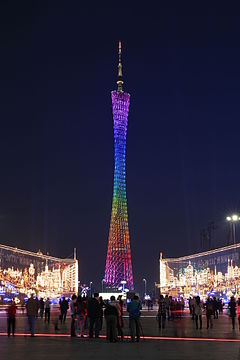

Here are some snap shots of the Rhino designs:
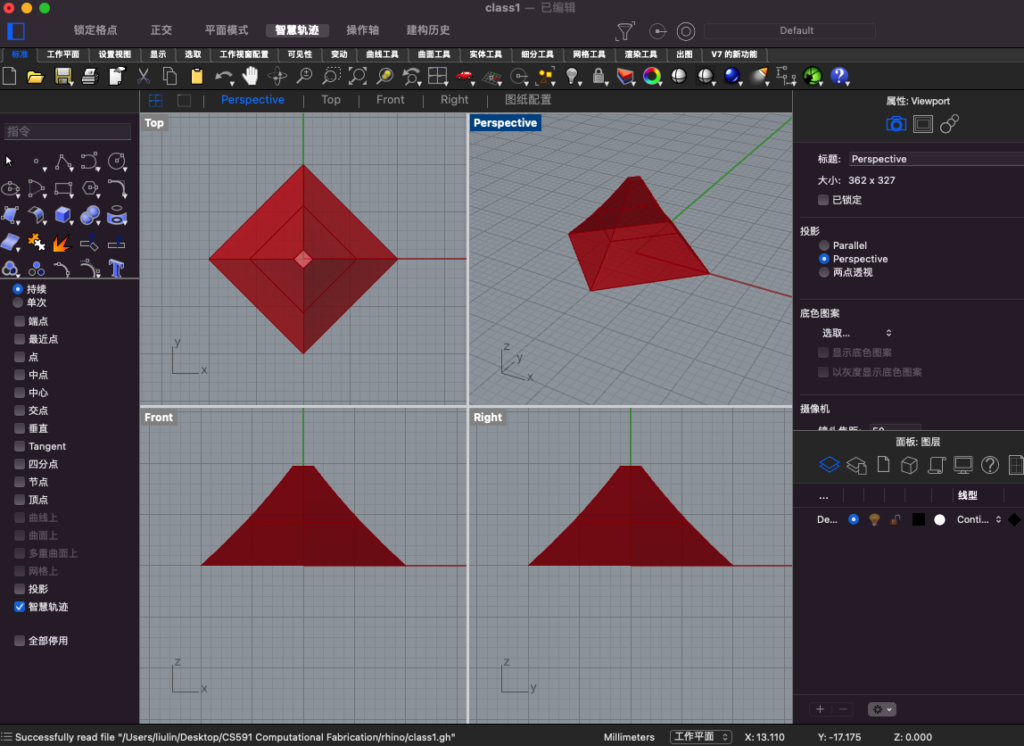
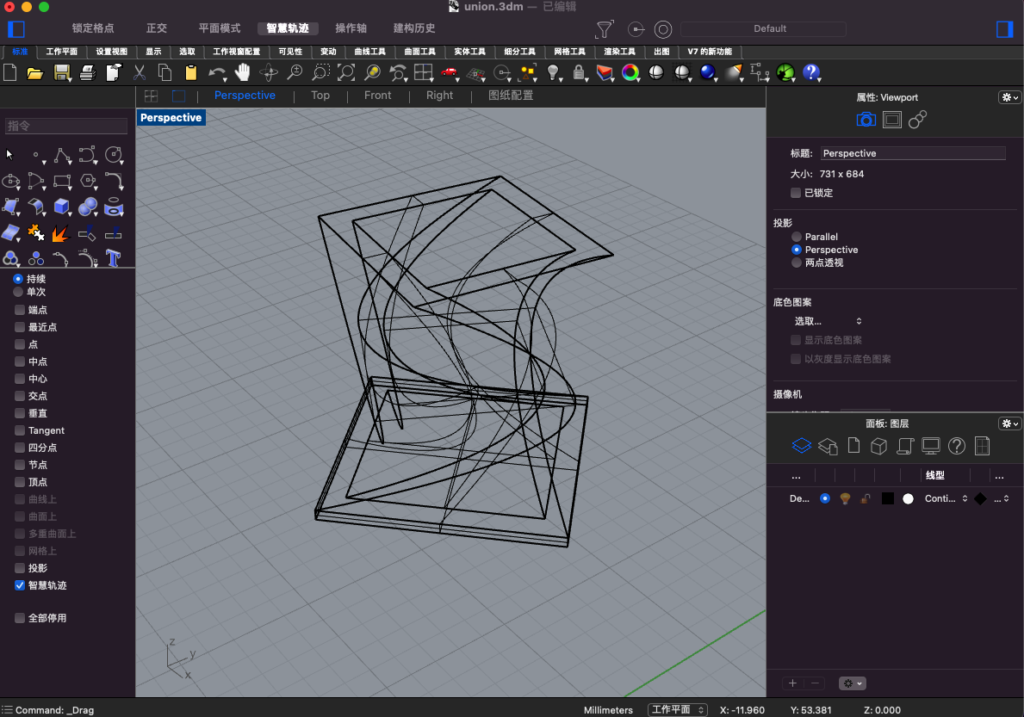
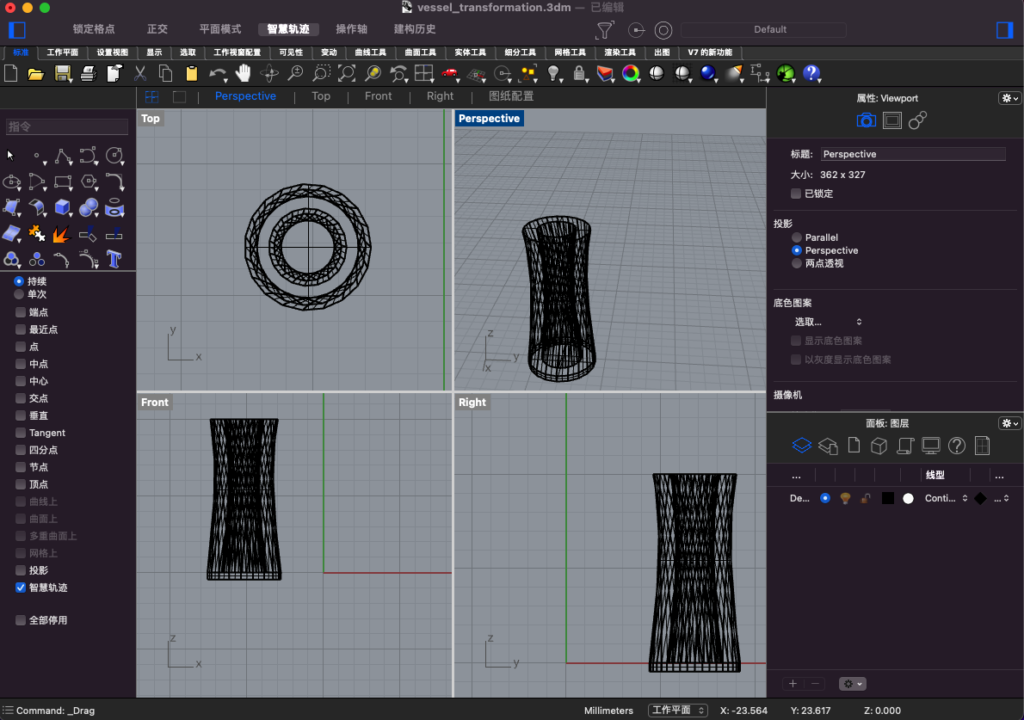
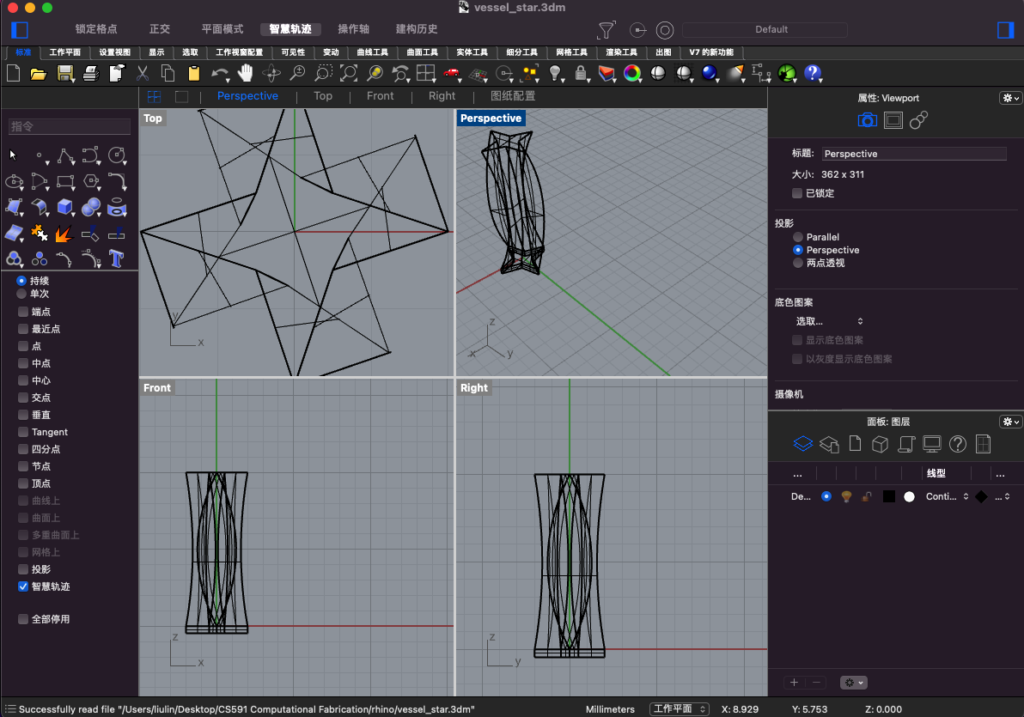
What I have learnt: 3D printing is a highly efficient process, unlike traditional manufacturing, 3D printing create an artifact accumulatively, rather than eliminated. So almost no material is wasted. Also the 3D printing process can be fully automated like a pipe line in the factory. There are also limits in 3D printing: the materials can be printed with are still quite limited, if we have more choices of the materials in the future, like metal, concrete, or glasses. This technique can be more useful.
When I decided my designs by mimicking something that is enjoyable for eyes in my daily life, I tried to find a simple shapes by playing with the parameters and find the one that is most similar to the real artifact. I find using Rhino is not that easy as I first thought, there are too many tools and blocks to choose from. But I guess that is because I am not an expert in this area. I believe there should be other easier and more user-friendly ways to deal with this shape designing process.
A major lesson I learnt from this assignment is to explore what Rhino and the printer can do. How sharp the corners can be, and how many details can be included in the artifacts. Now I am more clear on the capabilities of the printer and I will dig more on Rhino for more possibilities.
Great job on a first time printing in 3D. With all the challenges coding, designing and then making files that would load and printing you did quite a nice job. I also love the idea of an upside down pyramid and a challenge like you mentioned of making it stable enough to stand. Very good job.
Hello Lin, I really enjoyed your presentation, and I really like your ninja star type of vessel. Also even though in your second vessel it, even though the base didn’t print perfect, it makes it look even better. I also agree with you that best way is to explore rhino and the capabilities of our 3D printer. I wished I had more time to explore to explore the capabilities of my designs and printer. Great Job!
Hello, Atah:
Thanks for the response, I would love to share with you more of my experience about the printers and the software. Let’s keep it up~
Hello, Chris:
Thanks for your response! I believe to realize this upside-down idea, I need to make she shell have different configuration by each layer. I am not sure how to do that for now, but I will keep digging.
Hi Lin, I like the way your vessels came out. I especially like the photographs you took! I really liked the way your pyramid came out. Great job!
Hello, Nat:
Thank you for the response! I will try to make the final products looks better!